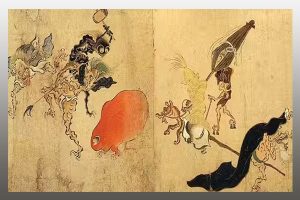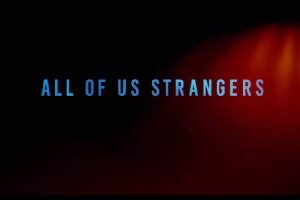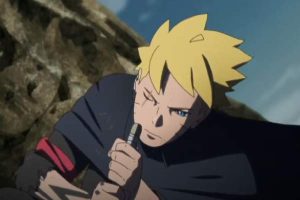From the vibrant cityscapes to the tranquil rural landscapes, Japan’s distinct culture has inspired filmmakers around the world. A fascinating aspect that stands out is Japanese calligraphy, an ancient art form that intertwines aesthetics, language, and spirituality. This art has seeped into Japanese cinema, adding a profound layer of depth to the storytelling.
The Beauty of Japanese Calligraphy: An Overview
The Japanese calligraphy known as “Shodo” is more than just penmanship. It is a spiritual voyage in which every brushstroke reflects the artist’s emotions. In numerous films, the art form functions as a metaphor, a component of the narrative structure, or even an instrument for character development. To dive deeper into this, you can explore this comprehensive guide on Japanese calligraphy.
Movie 1: “The Calligrapher’s Symphony”
“The Calligrapher’s Symphony” is a heartbreaking story about a calligraphy expert who loses his sight. The film depicts how he uses calligraphy as an extension of his personality, navigating through his loss and discovering a new perspective through the cadence of his brushstrokes. The film portrays wonderfully how calligraphy is more about the voyage of the brush than the ink on the paper.
Movie 2: “Ink and Soul: Japan’s Story”
The historical drama “Ink and Soul: Japan’s Story” captures Japan’s transformation over the centuries. The protagonist is a humble calligrapher whose artwork documents these transformations. His evolving calligraphy techniques parallel Japan’s shifting society and culture. This film employs calligraphy as a metaphor for the fluidity and adaptability of Japanese culture.
Movie 3: “The Painted Word: A Samurai Tale”
“The Painted Word: A Samurai Tale” is set in the samurai era and tells the tale of a samurai who seeks solace in calligraphy amidst the chaos of war. For him, the art form becomes a means of expression and serenity. In this film, calligraphy represents the survival of humanity in the face of violence.
Movie 4: “Scribing Shadows: The Ninja’s Art”
The action-packed story “Scribing Shadows: The Ninja’s Art” is about a ninja who uses his calligraphy abilities to transmit secret messages and codes. The film ingeniously combines calligraphy with the ninja’s secrecy and strategy, transforming art into a tool for deception. This video illustrates the complexity of calligraphy.
Movie 5: “Eternal Letters: Japan’s Floating World”
“Eternal Letters: Japan’s Floating World” is a romantic tale set in Japan’s Edo period. The protagonist, a calligrapher, communicates with his distant lover solely through his artful letters. Calligraphy in this film is a vehicle of love and longing, illustrating the romantic side of this art form.
Movie 6: “A Brush with Destiny: The Ronin’s Verse”
“A Brush with Destiny: The Ronin’s Verse” depicts a Ronin (masterless samurai) whose stories are retold through calligraphy. His existence, characterized by conflict and solitude, is depicted wonderfully in writing. This film employs calligraphy as a visual storyteller whose images communicate loudly than words.
Movie 7: “Sealed in Ink: Japan’s Hidden Heart”
In “Sealed in Ink: Japan’s Hidden Heart,” a small village teaches its children the fading art of local calligraphy to combat cultural extinction. The film depicts calligraphy as a symbol of cultural heritage and unity, denoting a silent rebellion against modernity.
The Impact of Calligraphy on Japanese Cinema: A Closer Look
The integration of calligraphy into Japanese cinema has served not just as a mere backdrop but as a driving force in storytelling, infusing narratives with a depth of cultural significance. Each film utilizes this art form in diverse ways, introducing different aspects of Japanese calligraphy, which span from being a steadfast guide to a dynamic narrator, a medium of love to a weapon of resistance. This transcends conventional aesthetics, becoming instrumental in the narrative fabric of these films and offering a window into the heart of Japanese culture for global viewers.
Below are some key areas where this influence is particularly pronounced:
- Narrative Device
- Cultural Connection.
- Symbolic Representation
- Artistic Expression
By offering more than mere visual aesthetics, the use of calligraphy in Japanese cinema has shown the power of art in storytelling. It provides a deeper understanding of the characters, enhances the plot, and, most importantly, bridges the gap between cultures, giving international audiences a unique insight into Japanese traditions and ethos.
The relationship between Japanese calligraphy and film functions as a mirror, reflecting the diversity and profundity of Japanese culture. These seven films offer an illuminating voyage through the artistic strokes of calligraphy, etching the splendor of Japan onto the global cinematic canvas. Allow these films to paint a picture of Japan that will remain with you long after the credits have rolled.
For more updates on Entertainment, Celebrity Babies, and Movies & TV Series, follow eCelebrityMirror.
For More Updates on Articles, Celebrity Babies, Celebrity Feuds, Celebrity Siblings, Entertainment, Richest Celebrities, Keep In Touch With eCelebritymirror.

 Picture- japanguide
Picture- japanguide







